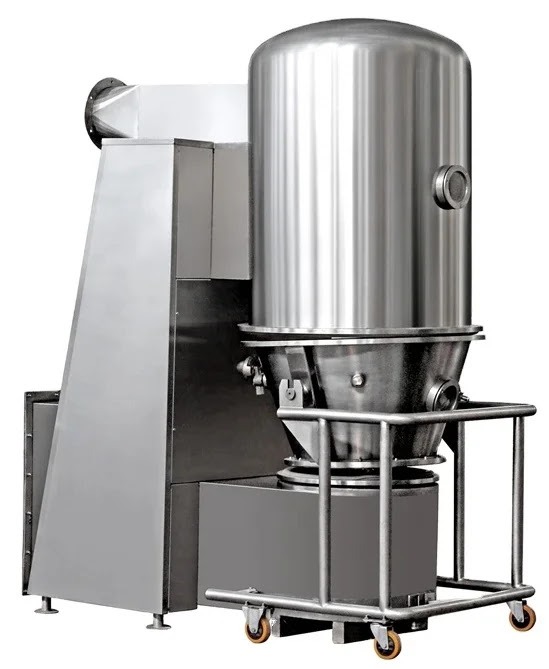Fluid Bed Dryer (FBD)
In a APE- Fluid Bed Dryer, to dry the materials a perforated bed of moist solid particles is passed through by hot, high-pressure air. Particles start to suspend in the air because hot air travels at a speed greater than their speed of settling. The moisture content of solid particles decreases when the moist particle suspends in heated air to produce the appropriate loss on drying (LOD). Away from the moist solid particles, the vaporized liquid is carried by the drying vapors. In some cases, the leaving gas is recycled to conserve energy.
Significant Features / FBD
- Fully automatic operation under PLC control or without PLC control.
- The product container that lifts and tilts to make handling easier.
- For uniform and effective product drying, very versatile process equipment.
- Heating Mode: Steam Heated or Electric Heated Blower.
- More hygienic and with Less Handling.
- MOC S.S. 304/ 316/ 316L with capacity 5kg to 600kg.
- Quick Dismantling of Dutch Sieves and Perforated Screen in.
- Exhaust Blower Provided.
Optional Features
- FLP Models
- Chilling Coil
- RH Sensor, CFM Sensor
- Top Spraying Arrangement

Technical Specification / FBD
| Model | 15 | 30 | 60 | 120 | 200 | 250 | 300 | 500 |
|---|---|---|---|---|---|---|---|---|
| Container Volume: Liters | 18 | 100 | 200 | 380 | 650 | 800 | 980 | 1700 |
| Batch Capacity: in Kg | 5-8 | 30-40 | 60-75 | 120-140 | 200-225 | 250-280 | 300-300 | 500-500 |
| Drying Temp C | 50-80 | 50-80 | 50-80 | 50-80 | 50-80 | 50-80 | 50-80 | 50-80 |
| Motor H.P. | 3 | 5 | 10 | 15 | 20 | 25 | 30 | 60 |
| Heating Load: KW for Electrical Heating Approximately Steam | 9 | 18 | 36 | 54 | Electrical Heating not recommended. | Electrical Heating not recommended. | Electrical Heating not recommended. | Electrical Heating not recommended. |
| Consumption Kgs. /hr. at Steam pressure 3 Kg/cm2 | 15 | 25 | 50 | 100 | 160 | 200 | 250 | 430 |
Quick Links
Our products
Get In Touch
Address: Building No. 2B, Plot No. O/1, Sagar Industrial Estate, Dhumal Nagar, Waliv, Vasai East Palghar 401208. Mumbai, Maharashtra, India.
© Asian pharma. All Rights Reserved. Designed by Cosmic web solution
